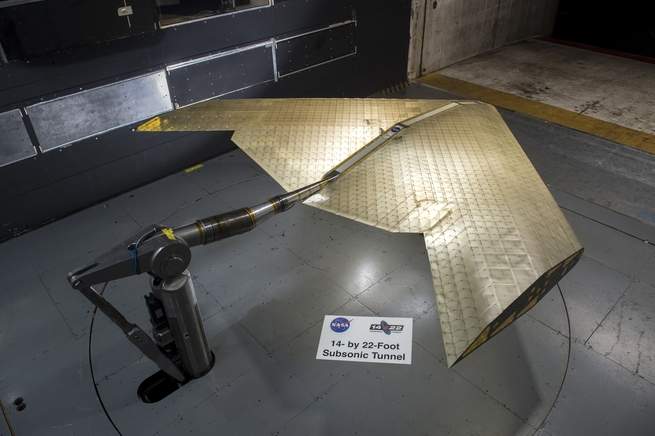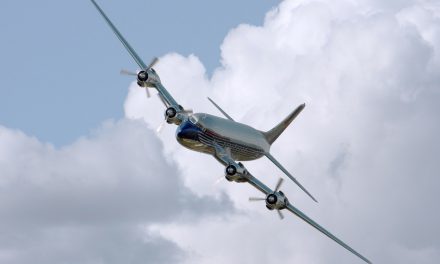NASA and MIT are currently working on a radical new wing design, in cooperation with other institutions. As reported in this Popular Science article, the wing will have the ability to alter its shape in-flight. While the commercial applications for this technology would be limited at best, it makes an interesting case for Unmanned Combat Aerial Vehicles (UCAV’s) and Unmanned Aerial Vehicles (UAV’s) which for the sake of simplicity, will henceforth be referred to collectively as drones.

To borrow a quote by Ben Jenette from the aforementioned article:
“On the inside of the wing, the construction has a lattice-like appearance. Because some of the components are more rigid than others, the researchers can “program” the wing by arranging those stiff or squishy materials in a specific way to control “the response that it has to an aerodynamic load,” Jenett says.
The research team created two prototypes, each with a wingspan of 14 feet. In one of them, they also added internal actuators that could move the wingtips and morph the wing shape. If the plane were actually flying—in this case, they tested it in a NASA wind tunnel—those actuators would allow the craft to do things like a roll or even produce more lift.”

One advantage that immediately springs to mind is the increase in stealth capabilities that this would bring. By having an internally housed control surface manipulator, the number of external wing components is limited. This would allow airframes to be created with even smoother surfaces which provides less opportunity for radar signals to find an edge or irregularity to bounce off of. Of course, this would most likely limit drones to shapes like that of the B-2 spirit but that certainly isn’t a bad thing.

One of the B-2’s 2 split rudders which help to provide yaw stability for the airframe. When the left rudder is deployed in flight, for example, the B-2 will “yaw” or “twist” in the direction of the deployed rudder. In the case of the photo above, it is keeping the nose of the aircraft from dipping into the direction of the turn. The “Morphing Wing” would be able to do this without deploying a control surface that can spoil it’s signature further while maneuvering.(Source: Unknown)
The technology looks quite promising and it’s just another example of the great leaps engineers and scientists are making as we head into the 2020’s, where denied access battlefields will begin to dictate a stronger presence of stealth and electronic warfare to increase the survivability of combat assets.







Recent Comments